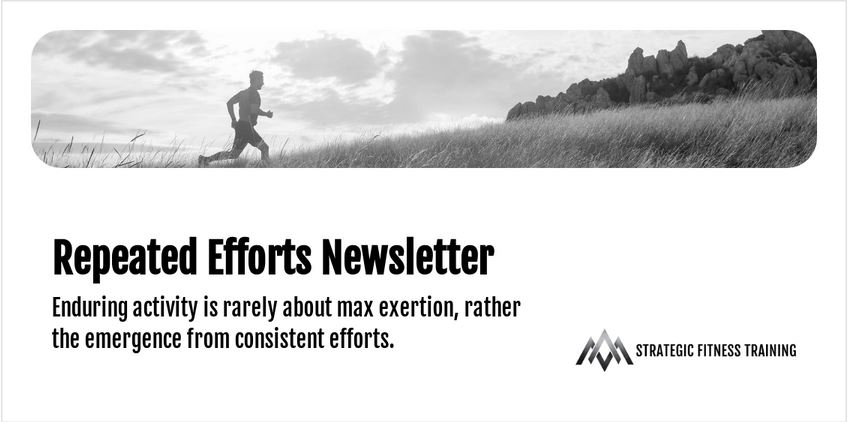3 EFFORTS FROM ME
1) People just do stuff to workout. There is a culture of strain, discomfort, and grinding reps meaning improvement. However, 99% of the population has no idea what physiological changes are occurring other than saying things like: “we’re building muscle”, “we’re improving our conditioning”, “we’re getting stronger”, etc. Statements like those are so oversimplified they hurt my head. A principle of strength and conditioning is specificity of adaptations from training selection. Pinpointing what adaptations are needed rather than just doing work is a far more effective strategy. Here is a simple example for a bilateral squat pattern.
2) A couple newsletters ago, I spoke about making choices is the only other guarantee in life other than death. Moreover, we make choices incessantly and the compound effect of these choices drastically alter life paths. So, how do we make better choices? Annie Duke wrote an excellent book on the subject: How to Decide.
“Why did things turn out the way they did? Any outcome is determined in part by your choice and in part by luck. Figuring out the balance of luck and skill is how things turn out feeds back into our beliefs – beliefs that will inform your future decisions. Without a solid framework for examining your past decisions, the lessons you learn from your experience will be compromised.”
3) About two months ago, an athlete proudly told me she gained 10 pounds from resistance training this summer. “All muscle” she enthusiastically stated. However, her movement assessment showed a great reduction in her joint range of motion and her ability to disperse force systemically – A.K.A. she had poor “brakes” for a multi-directional athlete who repeats high intensity efforts six days a week.
Focusing on max resistance weight training biases the musculoskeletal system toward late propulsion of the gait cycle. The body adapts to be closer to the position needed to apply max force into the ground (yes, even with upper body exercise); this is the opposite end of the spectrum from the position needed to absorb forces in a dispersed manner.
After the first week of practice she came to me saying how she feels like she is stuck in mud. After the second week she suffered a hamstring strain. This week, I received word she may have bilateral lower leg stress fractures. These are systemic force absorption issues. The notion of moving more weight to strengthen the fibers of a muscle or muscle group, like we’re thickening the rope in a pulley system, will not solve the issue. But, how someone performs certain exercises may because organic tissues are viscoelastic – think Silly Putty.
Heavy resistance training and adding muscle mass are not wrong. However, people need to understand “getting stronger” in a weight room, at least in the traditional sense, is not a panacea. There are tradeoffs from adaptations we create; Silly Putty isn’t pliable and rigid under the same type of force. These compromises may be too costly in certain context. Genetics, injury history and idiosyncrasies mixed with the type of activity you want to participate in determines what is “strong enough” from the customary perspective.
DM me or Email me if you have any questions or topics you would like me to discuss!
If you enjoyed that, please join the Newsletter by signing up below.
Best,
Dan

